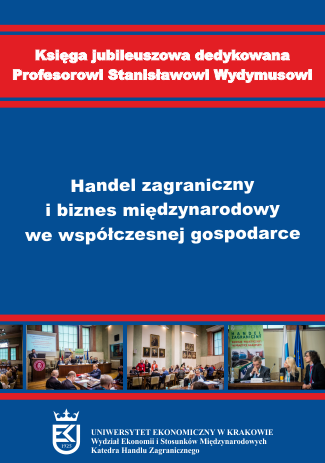Bariery działalności badawczo-rozwojowej krajów Grupy Wyszehradzkiej

Abstract
Kraje Grupy Wyszehradzkiej, które cechują się podobnymi uwarunkowaniami geograficzno-polityczno-gospodarczymi, aspirują do budowania gospodarek opartych na wiedzy i przyspieszenia postępu technologicznego. W tym kontekście intensyfikacja działalności badawczo-rozwojowej stanowi dla tych krajów kluczowe wyzwanie. Niniejsze opracowanie koncentruje się na określeniu obszarów problemowych w B+R Polski, Czech, Słowacji i Węgier na poziomie makroekonomicznym. Wydaje się bowiem, że nie tylko deficyt nakładów badawczo-rozwojowych stanowi barierę w efektywnym inwestowaniu w B+R, a problemy takie jak struktura finansowania, struktura realizacji B+R, czy problemy z zaangażowaniem w B+R sfery biznesu wciąż są kluczowymi barierami w modernizacji gospodarek i nadrabianiu dystansu do krajów rozwiniętych.
Keywords
struktura B R, finansowanie B R, Polska, Czechy, Słowacja, Węgry, nakłady na B R, zagraniczne filie w B R, deficyt biznesowych B R
References
- Balcerzak, A.P. (2015). Europe 2020 Strategy and Structural Diversity Between Old and New Member States. Application of Zero Unitarization Method for Dynamic Analysis in the Years 2004-2013, Economics and Sociology, Vol. 8, No. 2, 190-210.
- Balcerzak, A.P., Pietrzak, M.B. (2016). Structural Equation Model in Evaluation of Technological Potential of European Union Countries in the years 2008-2012. Toruń: Institute of Economic Research Working Papers, 6.
- Bartha, Z, Gubik, A. S. (2014). Specifics of International Business Competitiveness in Visegrad Countries – Qualitative Analysis of Selected Case Studies, W: D. Kiendl-Wendner, K. Wach (eds), Patterns of Business Internationalisation in Visegrad Countries – In Search for Regional Specifics. 127-159. Cartagena: Universidad Politécnica de Cartagena.
- Bočková, N. (2013). Visegrad Four countries: evaluation in R&D sectors of performance, Acta Universitatis Agriculturae et Silviculturae Mendelianae Brunensis, LXI, 4, 873-880.
- Buckley, P.J., Hashai, N. (2014). The role of technological catch up and domestic market growth in the genesis of emerging country based multinationals, Research Policy, 43, 423-437.
- Daszkiewicz, N., Olczyk, M. (2014). Competitiveness of the Visegrad Countries – Paths for Competitiveness Growth. W: D. Kiendl-Wendner, K. Wach, (eds), International Competitiveness in Visegrad Countries: Macro and Micro Perspectives. 33-52. Graz: Fachhochschule Joanneum.
- European Commission (2010). Europe 2020 – A European Strategy for Smart, Sustainable and Inclusive Growth, COM(2010) 546, Brussels: European Commission.
- European Commission (2011). Science, Technology and Innovation in Europe, Luxembourg: European Union.
- European Commission (2012). The 2012 EU Survey on R&D Investment Business Trends, Luxembourg: European Communities.
- European Commission (2013a). Innovation Union Scoreboard 2013, Brussels: European Union.
- European Commission (2013b). EU R&D Scoreboard. The 2013 EU Industrial R&D Investment Scoreboard, Luxembourg: European Union.
- European Commission (2015). Innovation Union Scoreboard 2015, Brussels: European Union.
- European Commission (2017). Ranking World top 2500 companies, <http://iri.jrc.ec.europa.eu/scoreboard14.html > (10.07.2017).
- European Union (2017), IUS database, <http://ec.europa.eu/enterprise/policies/innovation/ policy/innovation-scoreboard> (10.07.2017).
- Eurostat (2012). Europe 2020 Strategy – towards a smarter, greener and more inclusive EU economy?, Statistics in Focus, 39.
- Eurostat (2013). Science, technology and innovation in Europe. 2013 edition, Luxembourg: European Union.
- Gardocka-Jałowiec, A. (2012). Nakłady na działalność badawczo-rozwojową a innowacyjność polskiej gospodarki, Ekonomista, 1, 79-99.
- Gokhberg, L. (2012). The Transformation of R&D in the Post-Socialist Countries: Patterns and Trends. W: D.A. Dyker, S. Radosevic, Innovation and Structural Change In Post-Socialist Countries: A Quantitative Approach. 153-172. London: Springer, Volume 20.
- Golejewska, A. (2013). Competitiveness, Innovation and Regional Development. The Case of the Visegrad Group Countries. Gospodarka Narodowa, 7-8 (263-264),87-112.
- Golejewska, A. (2014). Innowacyjność Input-Output regionów grupy wyszehradzkiej, Oeconomia Copernicana, 1, 61-78.
- Hölzl, W., Janger, J. (2014). Distance to the frontier and the perception innovation barriers across European countries. Research Policy, 43, 707-725.
- Hudec, O., Prochádzková, M. (2015). Visegrad Countries and Regions: Innovation Performance and Efficiency. Quality Innovation Prosperity, 19/2, 55-72.
- Huňady, J., Orviská, M., Šarkanová, B. (2014). Determinants of European Firm’s Innovation and the Role of Public Financial Support. European Financial and Accounting Journal, 9, 1, 62-84.
- Káposzta, J, Nagy, H. (2015). Status Report about The Progress of The Visegrad Countries in Relation To Europe 2020 Targets. European Spatial Research Policy, 1, 22, 81-99.
- Kilar, W. (2014). Differentiation of Visegrad Group International Corporations in Comparison to World’s Largest Corporations. W: D. Kiendl-Wendner, K. Wach (eds), International Competitiveness in Visegrad Countries: Macro and Micro Perspectives. 171-186. Graz: Fachhochschule Joanneum.
- Krajewski, S. (2014). Innovation Levels in The Economies of Central and Eastern Europe, Comparative Economic Research, 17, 3, 101-122.
- Meske, W. (ed.) (2004). From System Transformation to European Integration. Science and Technology in Central and Eastern Europe at the Beginning of the 21th Century. Munster: Lit Verlag.
- MSZ RP (2017). Grupa Wyszehradzka, <http://www.msz.gov.pl/pl/polityka_zagraniczna/ europa/grupa_wyszehradzka/> (09.07.2017).
- OECD (2008). The internationalization of business R&D. Evidence, impacts and implications. Paris: OECD.
- OECD (2012). OECD Science, Technology and Industry Outlook. Paris: OECD Publishing.
- OECD (2014). OECD Science, Technology and Industry Outlook, Paris: OECD Publishing.
- OECD (2017a). Science, Technology and R&D Statistics, database, < http://www.oecd-ilibrary.org/science-and- technology/data/oecd-science-technology-and-r-d-statistics_ strd-data-en > (10.07.2017).
- OECD (2017b). Statistics on Measuring Globalisation, database, <http://han.uek.krakow.pl/han/oecd/www.oecd-ilibrary.org/finance-and-investment/ data/oecd-statistics-on-measuring-globalisation_global-data-en > (10.07.2017).
- Owczarczuk, M. ( 2013). Government Incentives and FDI into R&D. The Case of Visegrad Countries. Entrepreneurial Business and Economics Review, 1(2), 73‐86.
- Piekut, M. (2013). Innowacyjność krajów Unii Europejskiej. Kwartalnik Nauk o Przedsiębiorstwie, 3, 73-80.
- Piekut, M. Pacian, J. (2013). Przestrzenne zróżnicowanie nakładów na działalność badawczo-rozwojową na przełomie wieków. Economics and Management, 4, 205-224.
- Podwysocka, A. (2015). Nakłady na działalność badawczo-rozwojową w Polsce w latach 2000-2012 na tle wybranych krajów Unii Europejskiej. Acta Universitatis Nicolai Copernici, Zarządzanie XlII – 1, 11-20.
- Sierotowicz, T. (2015). Patent activity as an effect of the research and development of the business enterprise sectors in the countries of the European Union. Journal of International Studies, 8, 2, 101-113.
- Tomaszewski, M. (2014). Outsourcing and Innovative Activity of the Companies From the Visegrád Group. Chinese Business Review, 13, 6, 399-409.
- UNCTAD (2011). Foreign direct investment, the transfer and diffusion of technology, and sustainable development, UNCTAD, Geneva.
- Visegrad Group (2017).< http://www.visegradgroup.eu/ > (09.06.2017).
- Visegrad.info (2010). Visegrad countries on road towards knowledge society, <http://www.visegrad.info/innovation-and-research/factsheet/visegrad-countries-on-road-towards-knowledge-society.html > (10.06.2017).